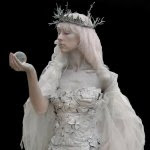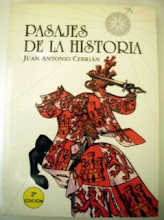I know! A
new post from me! Don't everybody faint!
I cannot
believe it will be almost 2 years since I had anything to say but I have
discovered something I'd like to share so this is a good time to jump back in.
Flashback...
Summer 2012. My friend Cheryl, a decorative furniture painter as well as
miniaturist, used some left over ASCP on a few pieces of vintage miniature
furniture.
"You
should try this," she said. "You would really like it for your
miniature furniture re-dos".
"Sure",
I reply. "I'll put it on my list."
Fast Forward...
Summer 2013. Cheryl now has her own brick and mortar business. One of the things she stocks is American
Paint Company's Clay/Chalk/Mineral base paint (aka "chalk paint").
“You
should try this,” she says. “You would really like it for your miniature
furniture re-dos”.
"Sure",
I reply. "Send me some sample jars." And so began my love
affair with chalk paint.
I have
been rehabilitating miniature furniture for several years. Sometimes it’s decent furniture that simply
needs a breath of fresh air: lovely Bespaq but oh so boring...
Sometimes
it’s damaged furniture that is beyond hope of looking like it once did: One leg gone, two others wobbly
And,
often, it’s inexpensive (often tacky) stuff that needs a complete re-do: yeah...sad, really sad.
I like
experimenting with different styles and finishes. Frequently, they end up quite
fanciful and would be uniquely stylish pieces in real life homes as well as
miniature ones.
However,
I was never really happy with the paint I was using, be it latex from the
hardware store or acrylic craft paint from the hobby store. I didn’t
always like the coverage, or the sheen or the way it sanded/aged or took
varnish, yada, yada. I had heard of chalk paint and milk paint and knew
that furniture painters lauded them both, but I had used milk paint before and
wasn’t a fan. There wasn’t a retail outlet for any kind of chalk paint
near me plus I heard it was quite expensive ($40/quart) and one could only
purchase it by the quart or gallon. My friend's situation afforded
me the opportunity to try it.
What is "Chalk Paint"?
Chalk
paint, in one form or another, has been around for centuries. It is made
from water and color pigments and some sort of binding agent, such as natural
clays or the mineral in chalk. Traditional gesso is a type of chalk paint;
so is whitewash. There are no oils or synthetics in it whatsoever.
It is completely organic, extremely easy to use and clean up is soap and water.
Don't Try
This At Home...
While
there are lots of “recipes” on the Internet for homemade chalk paint, I
wouldn’t waste my time and money. Mixing Plaster of Paris with water and latex
paint usually results in a slowly hardening, gloppy mess that doesn’t begin to
produce the beautiful results of commercially made chalk paint. Also,
don’t confuse this with “chalkboard paint” which produces a surface on which
one can write with chalk… totally different animal.
Why Do I
Love This Paint?
1.
No odor. None. Ever. Solvent free. No acrylic co-polymers. No
ethylene glycol. No fungicides. No VOC. Just water, pigment and minerals.
As a result, it does have a shelf life of 2 years but I expect mine will
be used up by then.
2. Texture.
Thick, smooth and creamy. Goes on like silk off a spool and thins easily with
water. I just dip my brush in water and then into the paint.
No gloppiness or stringy-ness that I always see with latex or acrylic.
They don’t recommend stirring or shaking and I’ve not felt any need to do so.
Because I do not want to contaminate the paint in any way, I transfer a small
amount to another container (like a lid) with a clean craft stick. I am then free
to add as much or little water as I feel I need... and it dilutes almost
immediately, similar to watercolor paints.
3.
Ease of preparation of the wood or other substrate. The company
says it will stick to any non-oily surface without sanding... and it seems to.
I used it on a resin pedestal that had been coated with what appeared to
be high gloss tinted varnish and the black, used undiluted, covered in one
coat. I usually give everything a light sanding… just because. Most
importantly, you need to degrease the piece. You can use TSP, if you have
it. Even soap and water like Simple Green works. I have used
Greased Lightning Cleaner with success. Obviously, the better the prep, the
better the outcome.
This
table was factory-painted that white coating that nothing ever seems to cover,
like the bench in the photo. The top of the trestle table was stripped
and then heavily sanded to the bare wood; the base was not.
All I did
with the base was lightly sand and apply two coats of Beach Glass,
which I allowed to dry thoroughly in between. Then I lightly sanded with
super-fine sandpaper and applied another thinned coat. When that was dry, I
buffed with a white pad and the finish was very smooth. I decided to add
a coat of Vintage Wax to the base when I waxed the top and I loved how it
turned out.
4.
Coverage. I read that some users get great coverage on raw or
heavily sanded wood with a single coat and that has been my experience as well.
I needed only one (undiluted) coat of Dollar Bill on a small wooden
plaque I intend to use as a vignette base.
For the
furniture, I’ve been using several light coats with fine-grit sanding between
coats 2 and 3. On darker stained wood, I have
needed a thicker coat for the second coat. But it all depends on the look
you are going for. The bottom line is that the more coats with sanding, the better the look. This chair will have a “shabby” look so I don’t
care if it chips…in fact, I want it to.
A Word
About Distressing...
Most of
the time, distressing it is achieved by sanding, but that can leave scratch marks
on the painted surface. A better way is "wet distressing" which
is possible due to the nature of the paint. After the little plaque was
completely dry (about 4 hours), I applied an undiluted coat of Lincoln's Hat. I
waited a bit for that to dry up and then went in with a wet cloth and gently
rubbed away the black paint where I might normally sand for wear. Voila!
Beautiful distressed/worn finish... no scratch marks! The results
are remarkable.
Speaking
of Wax...
I
mentioned that I waxed the top of the trestle table as well as the base.
I've used paste wax on real life furniture... my "farmhouse"
dining table came with a can. But I never considered using it on miniature
furniture before.
"Try it," said Cheryl. "You'll like it". I did. I do!
"Try it," said Cheryl. "You'll like it". I did. I do!
Wax doesn't lend itself to every miniature furniture application but
when it does, it produces an absolutely silken finish. Love it!
...
And Colors...
No,
they're not Sherman Williams or Folk Art. They don’t have a bazillion
colors.
As a
matter of fact, they only have about 30 at the moment and easily 1/3 of those
I’d consider “neutral”. But they are rich, clear, vibrant colors.
Plus I love the names … Beach Glass, Wild Horses, Dawn’s Early Light. I
can mix my own colors because the paint is so pure it is easy to do.
Why
American Paint Company Chalk Paint...
Three
reasons. It's made in the good old US of A and has been for 25 years. By buying
it, I am supporting their business, the business of my friend who sells their
paint, and my business.
All US
based business. Win-win-win all around!
Here are
links to my friend's business and the American Paint Company websites:
































